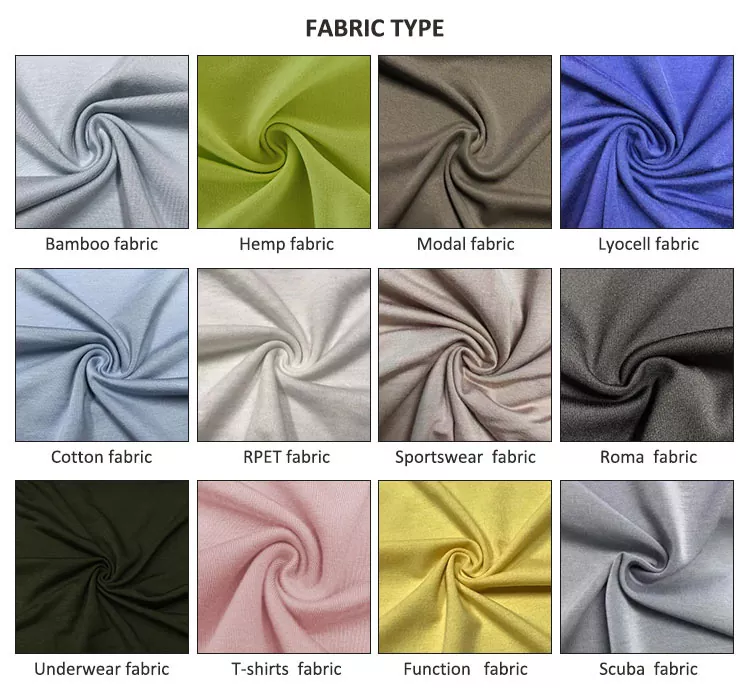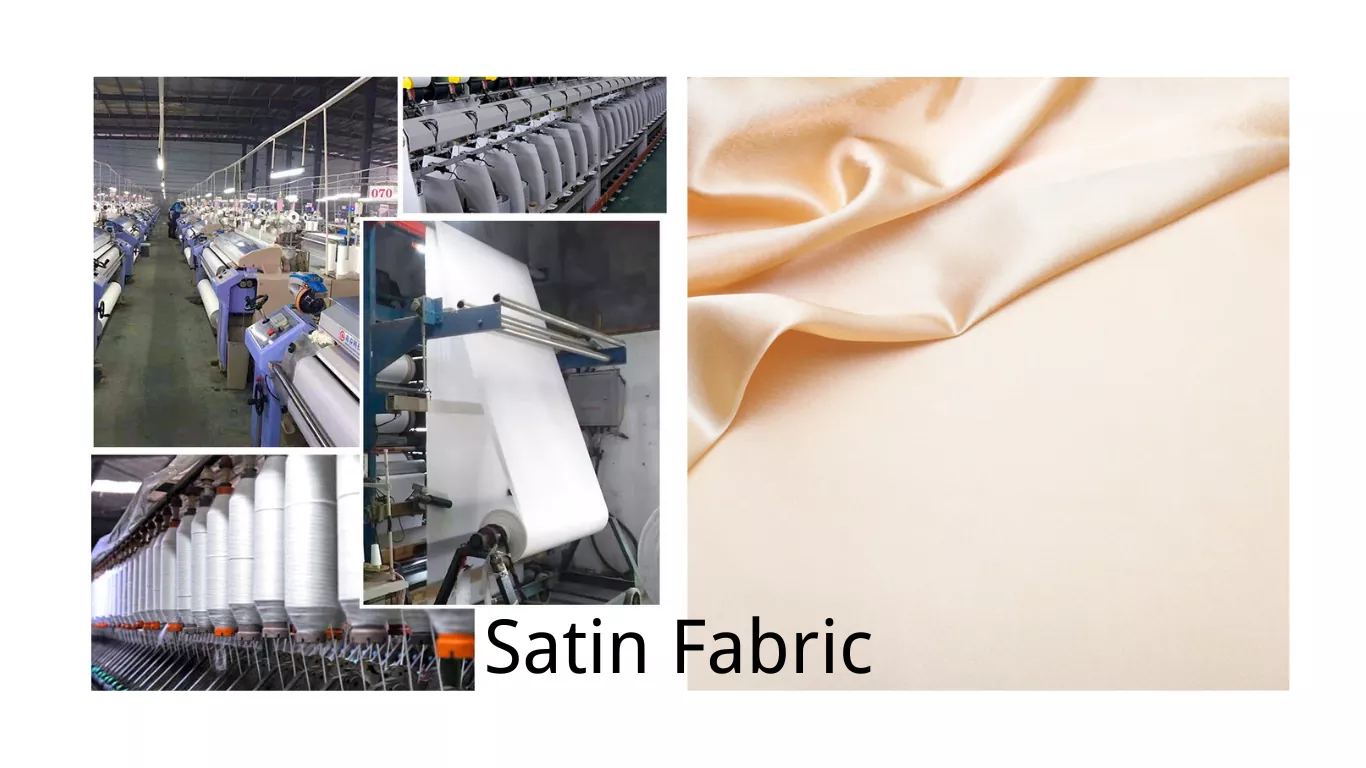When it comes to elegance and versatility, few fabrics can rival satin. Known for its smooth, glossy surface and beautiful drape, satin has been a favorite in fashion and home décor for centuries. Whether you’re looking to create a stunning evening gown, luxurious bed linens, or chic interior accents, satin offers unmatched luster and sophistication. In this comprehensive guide, we’ll explore the origins of satin, its various types, and why it continues to be a top choice for designers and homemakers alike. Join us as we delve into the world of satin fabric and discover how you can incorporate this timeless textile into your own style. Read on to uncover the secrets behind satin’s enduring appeal and get inspired to elevate your next project with this luxurious material.
Innehållsförteckning
What is Satin Fabric?
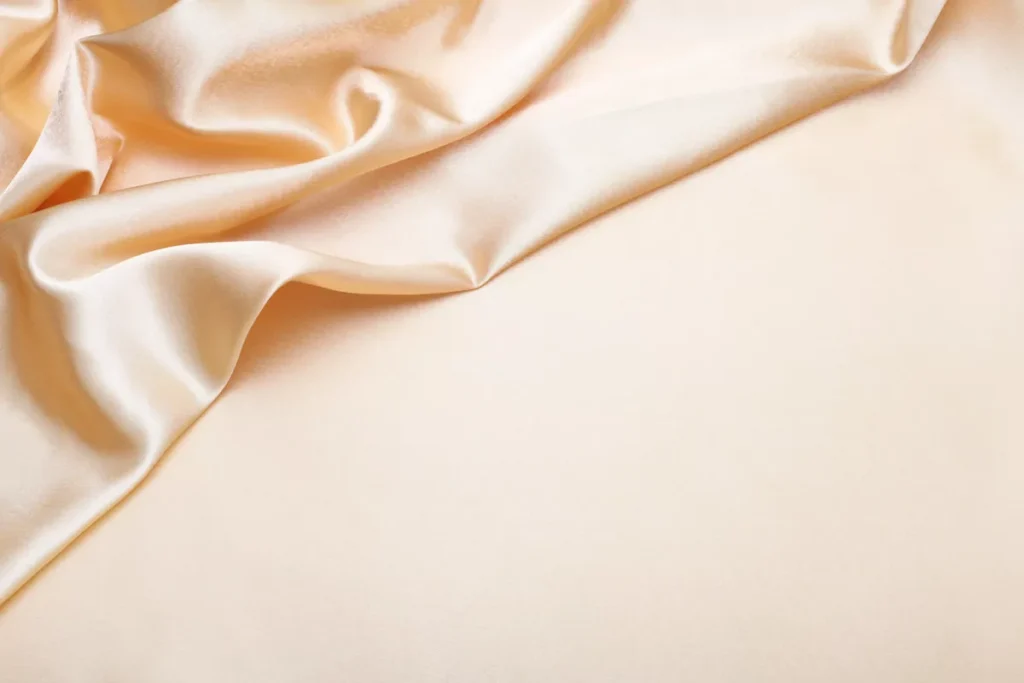
Satin is a luxurious and elegant fabric known for its smooth, glossy surface and soft, silky feel. This fabric is made using a special weaving method called the satin weave. This technique creates long, floating threads on one side, giving it a lustrous sheen, while the other side has a dull texture. The result is a fabric that feels soft and silky, perfect for adding a touch of luxury to any garment or item.
Satin fabric has a rich history that dates back to ancient civilizations. It originated in China around the 1st century BC, where it was woven from silk using a unique technique to create a smooth and lustrous surface. The fabric symbolized wealth and status in Chinese society. Satin was later introduced to Europe and the Middle East via the Silk Road, quickly becoming favored by the elite for clothing and decorative items.
During the Renaissance, satin gained popularity in European fashion, used in opulent gowns and furnishings. The 19th-century invention of the Jacquard loom allowed for more intricate satin designs and the use of various fibers, including cotton and synthetic ones like rayon and polyester. This made satin more accessible and affordable.
Today, satin remains a popular fabric for high-end fashion and hem textiles due to its luxurious feel, beautiful drape, and versatility.
The Satin Weave: Understanding the Structure
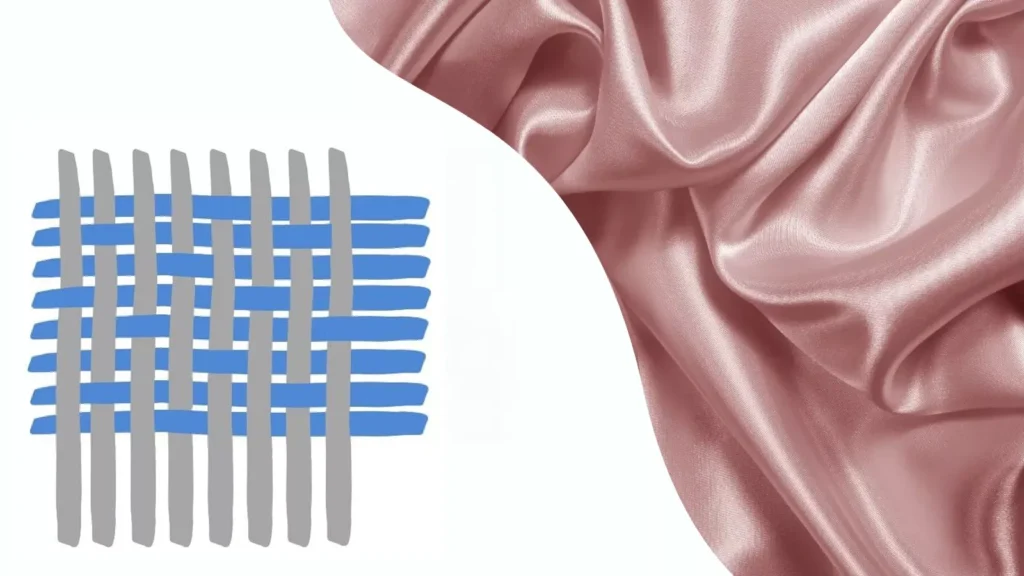
Satin is a special kind of fabric made with a weaving technique that creates a smooth and shiny surface. This is done by having threads float over several other threads without weaving through them, which makes the fabric look luxurious and feel silky.
There are two main types of satin: warp-faced and weft-faced. In warp-faced satin, the threads that run lengthwise (warp) are more visible and create the shiny surface. In weft-faced satin, the threads that run across the fabric (weft) are more prominent and make the fabric even smoother and shinier.
The weaving process uses different numbers of harnesses, which are parts of the loom that move the threads. A common type is 5-harness satin, where a warp thread goes over four weft threads and under one in a repeating pattern.
Satin fabrics are known for their beautiful shine, nice drape, and soft feel. However, because of the long floating threads, they can be delicate and may snag easily. Satin can be made from various fibers like silk, polyester, rayon, and cotton (called sateen), each giving the fabric unique properties and uses.
Types of Satin Fabric: A Variety of Options
This table presents different types of satin fabric, their descriptions, and common uses.
| Type of Satin Fabric | Beskrivning | Common Uses |
|---|---|---|
| Charmeuse Satin | Lightweight, glossy, and very soft. It drapes beautifully and has a luxurious feel. | Evening gowns, lingerie, blouses |
| Antique Satin | Heavier and less shiny with a slightly textured surface. | Drapery, upholstery, formal attire |
| Duchess Satin | Heavy, stiff, and very smooth with a high shine. | Bridal gowns, evening wear |
| Crepe Back Satin | Features a smooth, shiny surface on one side and a crepe texture on the other. | Dresses, blouses, skirts |
| Slipper Satin | Firm, durable, and smooth with a moderate shine. | Shoes, bags, dancewear |
| Polyester Satin | Made from polyester fibers, it is affordable and durable but less breathable. | Costumes, sleepwear, pyjamasset, slipdress, decorative purposes |
| Silk Satin | Made from silk fibers, it is soft, luxurious, and has a natural sheen. | High-end fashion, luxury items, pajamas, robes, nightdress, cami set |
| Stretch Satin | Contains spandex or lycra, providing stretch and flexibility. | Fitted garments, activewear, sleepwear, dress, robes, nightgown |
| Baronet Satin | Made with rayon or acetate warp threads, it has a high gloss and is heavier than other satins. | Evening gowns, formal attire |
| Peau de Soie | Medium to heavy weight with a dull finish, known for its durability and fine texture. | Bridal gowns, formal wear |
Properties and Benefits of Satin Fabric
This table outlines the properties and benefits of satin fabric, providing clear and concise information for understanding why satin is a popular choice for various applications.
| Property | Beskrivning | Benefits |
|---|---|---|
| Smooth Surface | Satin fabric has a smooth, glossy surface that feels luxurious to the touch. | Provides a sleek and elegant appearance, comfortable to wear. |
| High Shine | Satin is known for its lustrous finish that reflects light beautifully. | Adds a touch of glamour and sophistication to garments. |
| Hållbarhet | Satin, especially when made from polyester or blended fibers, is strong and long-lasting. | Suitable for items that require frequent use or washing. |
| Drapability | Satin fabric drapes well, creating fluid and graceful lines. | Ideal for garments like dresses and gowns that need elegant flow. |
| Mångsidighet | Available in various types and weights, suitable for different applications. | Can be used in clothing, home decor, and accessories. |
| Andningsförmåga | Natural satin fabrics like silk are breathable and comfortable to wear in different climates. | Keeps the wearer cool and comfortable in warm weather. |
| Hypoallergenic | Silk satin is naturally hypoallergenic, making it suitable for sensitive skin. | Reduces the risk of skin irritation and allergies. |
| Stretchability | Stretch satin contains spandex or lycra, offering flexibility and ease of movement. | Perfect for fitted garments and activewear. |
| Wrinkle Resistance | Satin, particularly synthetic types, is resistant to wrinkling and maintains its smooth appearance. | Ideal for travel clothing and items that require a polished look. |
| Ease of Dyeing | Satin fabrics, especially those made from synthetic fibers, absorb dyes well and retain vibrant colors. | Offers a wide range of color options for various design needs. |
Applications of Satin Fabric
Satin is a very popular fabric because it looks fancy and feels soft. It’s used in many different ways:
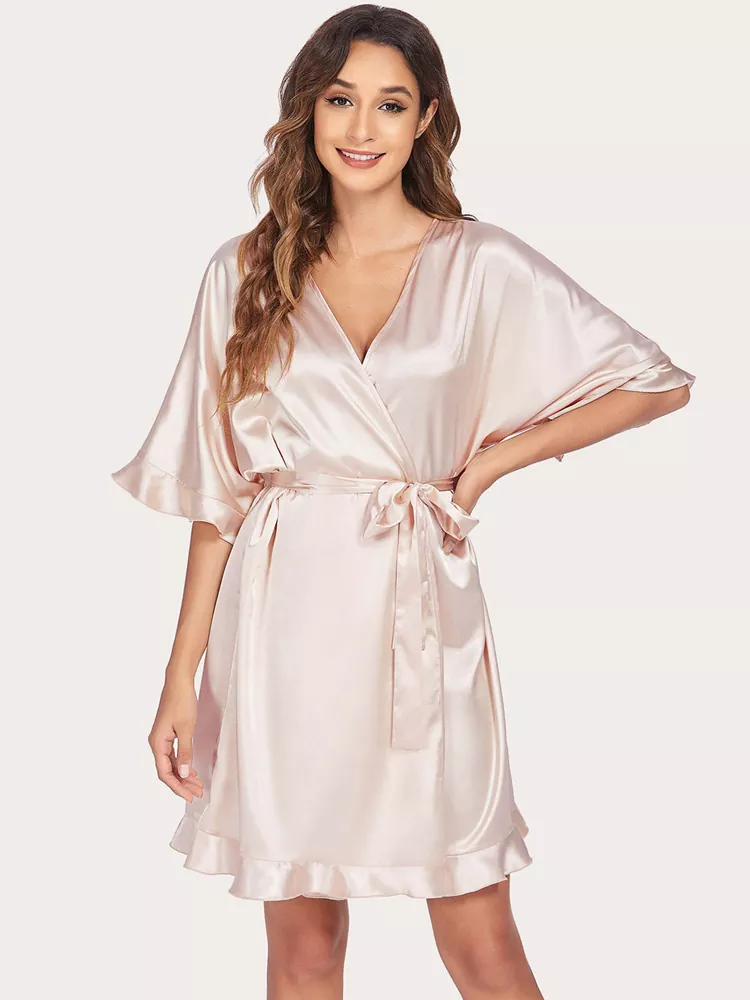
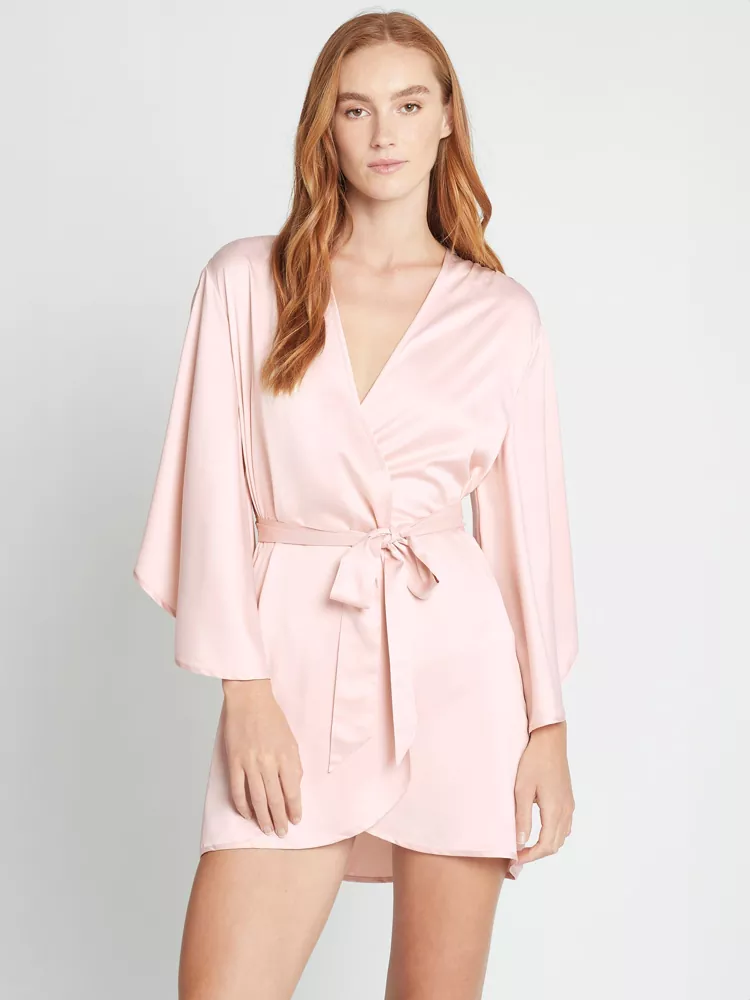

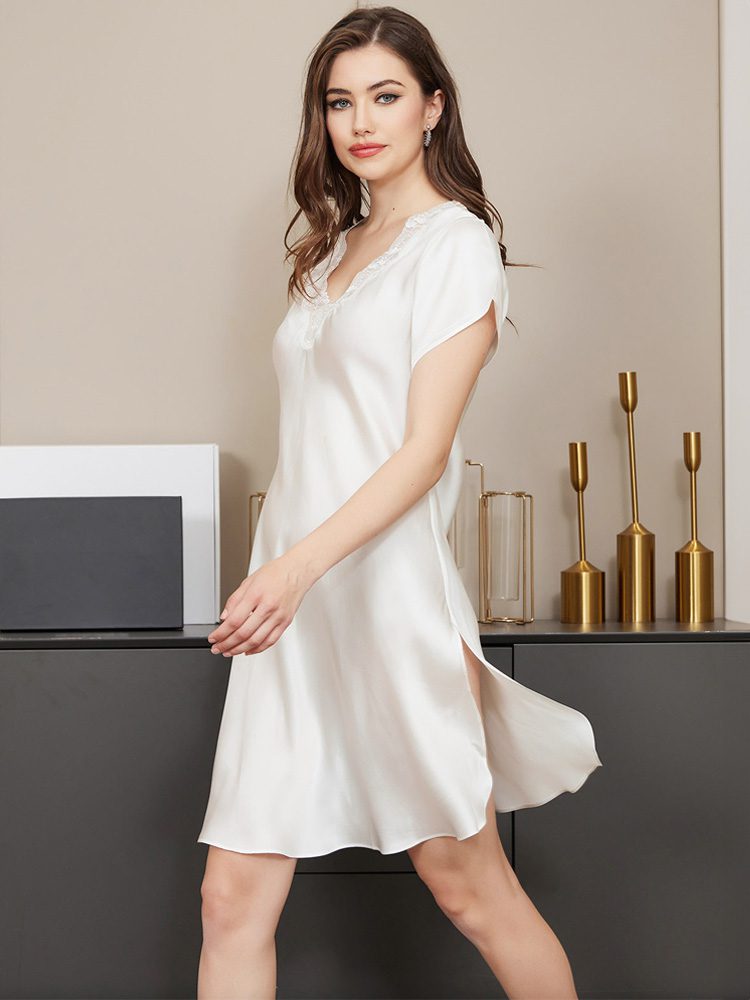
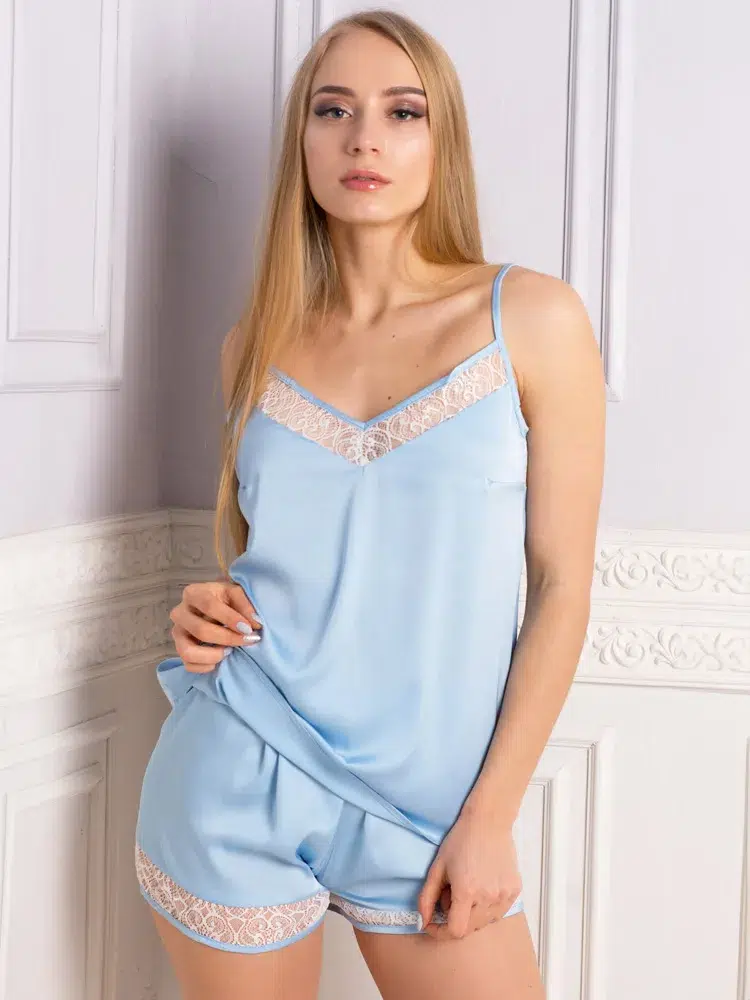

For clothes, satin is great for making beautiful evening dresses, wedding gowns, and fancy outfits. It’s also used for comfortable and elegant lingerie, nightgowns, robes, cami sets, and pajamas. Satin blouses and shirts can make everyday clothes look more stylish. Accessories like ties, scarves, and hair things often use satin too, and sometimes it’s even used inside fancy shoes.
In homes, satin is used for curtains that make rooms look more glamorous. It’s also used for bedding like sheets and pillowcases, which feel very luxurious but might not be very breathable. Sometimes, satin is used to cover chairs or footstools to make them look elegant.
Satin is also used in dancewear, like ballet shoes, because it’s strong and helps dancers move smoothly. For crafts, satin is great for making ribbons, bows, and other projects because it shines and drapes well. It’s also used to make gifts look extra special when wrapped with satin ribbons.
Satin Fabric Care and Maintenance
Satin is a very nice fabric that needs special care to keep it looking smooth and shiny. Here’s how to take care of it:
To wash satin, it’s best to gently hand wash it with warm water and a gentle soap. If you use a washing machine, put it on the delicate cycle with cold water and use a laundry bag. Don’t use bleach or fabric softener because they can damage the satin.
After washing, don’t put satin in the dryer. Instead, roll it in a towel to get rid of extra water and then let it air dry on a flat surface, away from the sun or heat, as the heat can cause shrinkage, fading, and damage to the fibers.
If you need to iron satin, use the lowest heat setting and iron on the dull side, not the shiny side. Put a clean cloth between the iron and the satin to protect it.
When you store satin, keep it in a cool, dry place away from the sun. Use breathable bags or containers and fold it carefully or hang it on padded hangers to avoid creases.
By doing these things, your satin items will stay beautiful for a long time.
Satin Fabric vs. Other Fabrics
Below is a comparison between Satin fabric and similar fabrics, listing the advantages and disadvantages of each type of fabric:
| Typ av tyg | Fördelar | Nackdelar |
|---|---|---|
| Satin | – Luxurious sheen and smooth texture – Good drapability – Versatile for various garments and home decor | – Can snag easily – Requires delicate care – Can be slippery to sew |
| Silk Satin | – Natural fiber with excellent breathability – Superior sheen and smoothness – Hypoallergenic | – Expensive – Requires dry cleaning or delicate washing – Can weaken and yellow with prolonged sun exposure |
| Polyester Satin | – Affordable alternative to silk – Durable and less prone to wrinkles – Easy to wash and care for | – Less breathable than natural fibers – Can have a synthetic feel – Environmental impact of polyester production |
| Charmeuse | – Luxurious shine and very soft – Excellent drape and flow – Lightweight and breathable | – Prone to snagging and fraying – Requires delicate care – Can be slippery to handle and sew |
| Crepe-back Satin | – Versatile with a different texture on each side (smooth satin and textured crepe) – Excellent drape | – Can be more expensive than regular satin – Requires careful handling |
| Sateen | – Has a soft, glossy surface similar to satin – Often made from cotton, providing good breathability – More affordable than silk | – Less luxurious sheen compared to silk or polyester satin – Can wrinkle easier than polyester – May not drape as well as satin |
| Brocade | – Rich, decorative fabric often with intricate patterns – Very durable – Adds a touch of luxury and elegance | – Can be heavy and stiff – Expensive – Requires special care |
| Taffeta | – Crisp and smooth texture with a slight sheen – Holds shape well, making it ideal for structured garments – Available in various fibers (silk, polyester, etc.) | – Can be noisy (rustles)– Less comfortable against the skin – Prone to creasing and wrinkling |
Choosing the Right Satin Fabric
When choosing satin fabric, think about what it’s made of and how heavy it is. Here’s what you need to know:
| Factor | Beskrivning |
|---|---|
| Fiber Content | |
| Silk Satin | The epitome of luxury, silk satin offers the most elegant drape and a soft, smooth feel. However, it’s also the most expensive and delicate option. |
| Polyester Satin | A popular and affordable alternative, polyester satin is durable, easy to care for, and widely available. The downside is a slightly less luxurious feel and breathability compared to silk. |
| Nylon Satin | Known for its strength and water resistance, nylon satin is often used for sportswear applications or items that need frequent washing. It may have a less lustrous appearance than other types. |
| Cotton Satin (Sateen) | This offers a more matte finish compared to other satins and is known for its breathability and comfort. It’s a good choice for sleepwear or garments where a softer sheen is desired. |
| Weight of the Fabric | |
| Lightweight Satin | Ideal for delicate garments like lingerie, robes, pajamas, cami set, blouses, or flowing scarves. It drapes beautifully but may be more prone to snags. |
| Medium-weight Satin | The most versatile option, suitable for dresses, skirts, blazers, and some home decor items like curtains. It offers a good balance between drape and structure. |
| Heavyweight Satin | Perfect for upholstery, structured garments like corsets, or items that need more body. It drapes less than lighter weight options but provides a more substantial feel. |
| Additional Considerations | |
| Stretch Satin | Blended with elastic fibers, stretch satin offers more flexibility and is ideal for body-hugging garments like dresses or lingerie. |
| Crepe Satin | This type has a slightly textured surface that combines the sheen of satin with the subtle texture of crepe. It drapes well and can be a good choice for dresses or blouses. |
So, pick the satin that fits what you need for your clothes or home.
Satin Fabric in Fashion and Culture
Satin, with its smooth texture and lustrous sheen, has been a symbol of luxury and elegance for centuries. Originating in China around the 12th century, its name is derived from the port city of Zayton, a significant trading center. This fabric has been a favorite for royalty and the elite, seen in opulent gowns and imperial robes, reflecting wealth and high social status.
In the fashion world, satin is a staple for formal wear, evening gowns, and bridal attire, known for its ability to catch light and drape beautifully. It’s also popular for lingerie, cami sets, robes, and sleepwear, offering comfort and sensuality. Modern designers incorporate satin into a variety of garments, from blouses and dresses to jackets and pants, adding a sophisticated touch to everyday wear.
Culturally, satin signifies success and achievement, often used in ballet shoes for their smooth surface and in wedding dresses for their elegance. It extends beyond fashion into home decor, upholstery, and gift wrapping, enhancing spaces with a glamorous touch.
Satin’s timeless appeal lies in its versatility, adding a sense of luxury to various aspects of life. From historical significance to modern applications, it continues to be a fabric that conveys a sense of sophistication and elegance, making it a cherished element in both fashion and culture.
Vanliga frågor
What is the difference between satin and silk?
All silk satin is satin, but not all satin is silk. While silk is a natural protein fiber, satin refers to a specific weave pattern that can be achieved with various fibers, including silk itself. Silk satin combines the natural properties of silk with the lustrous satin weave pattern.
Is satin fabric wrinkle-resistant?
Satin, a luxurious fabric, has varying degrees of wrinkle resistance depending on its thickness and fiber content. Thicker satins, particularly those made from synthetic fibers like polyester, are more resistant to wrinkles. However, silk satin and lighter satins are more prone to creasing and require careful handling.
To maintain the elegant look of satin, it’s essential to hang or store garments properly to prevent creasing. When ironing satin, use low heat and iron on the fabric’s dull side to avoid damage. For the best wrinkle resistance, consider choosing satin blends with polyester or other synthetic fibers.
How can I tell if satin fabric is real silk?
When shopping for satin, it’s important to know if it’s made from real silk or synthetic fibers. Here’s how to tell the difference:
Check the Label: Look for “100% silk” or “silk blend” for real silk. If it just says “satin,” it’s likely synthetic.
Breathability Test: Breathe on the fabric; silk should feel slightly cool as it absorbs moisture.
Burn Test: Burn a small, hidden thread. Silk will turn into ash with a hair-like smell, while synthetics will melt with a plastic odor.
Price Point: Real silk is more expensive due to its Produktionsprocess.
Sheen and Drape: Silk has a richer sheen and better draping qualities than synthetics.
Momme Weight: Silk is measured in momme; lack of this information suggests it’s not real silk.
Care Instructions: Silk requires delicate care, unlike machine-washable synthetics.
For a more detailed inspection:
Visual Inspection: Real silk has a deep, lustrous sheen.
Touch: Silk feels smooth, soft, and cool.
Drape: Silk drapes elegantly and fluidly.
Use these methods in combination for the best results. If in doubt, consult a textile expert. Remember, clear labeling from a reputable retailer is your best bet.
What are the best uses for satin fabric?
Satin’s smooth, glossy surface makes it a favorite for luxurious applications. It’s ideal for evening gowns, nightdresses, pajamas, lingerie, robes, and bridal wear for its elegant drape and sheen. In home decor, satin enhances bedding, curtains, and furniture with a touch of class. As accessories, satin scarves, handbags, and hairbands add a chic, polished look. Choose satin’s weight and fiber based on your needs, from delicate silk to durable polyester. Remember, satin requires special care to maintain its lustrous beauty.
Where can I buy high-quality satin fabric?
Satin fabric can be purchased from fabric stores, online retailers, and specialty textile shops. It is available in a wide range of colors and finishes to suit different project needs.


